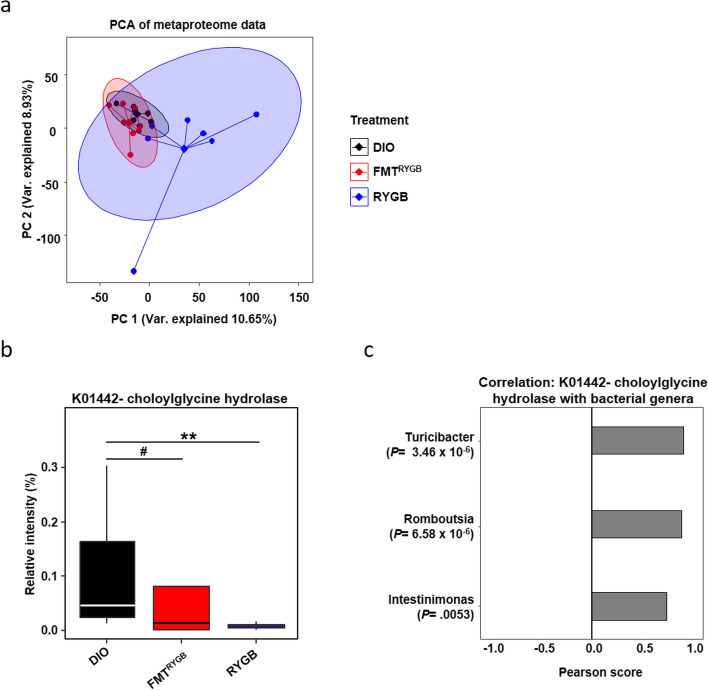Fig. 6.
Metaproteomics of intestinal microbiota. a Principal component analysis (PCA) of protein group abundances reveals significant differences (PERMANOVA P = 0.001) in the metaproteomes between treatments. b Significant changes (Kruskal-Wallis test P = 0.0456) in the abundance of choloylglycine hydrolase function (KEGG K01442), known to deconjugate conjugated bile acids, between treatments in the intestinal microbiome was observed, with the post hoc pairwise analysis revealing a significant change between RYGB and DIO (Dunn test, P = 0.0069 (**)), and a trend between DIO and FMTRYGB (Dunn test, P = 0.0823 (#)). c Microbiome bacteria genera that are significantly associated with the abundance of choloylglycine hydrolase. n = 6–10 animals per group with pooled data from 3 independent experiments

